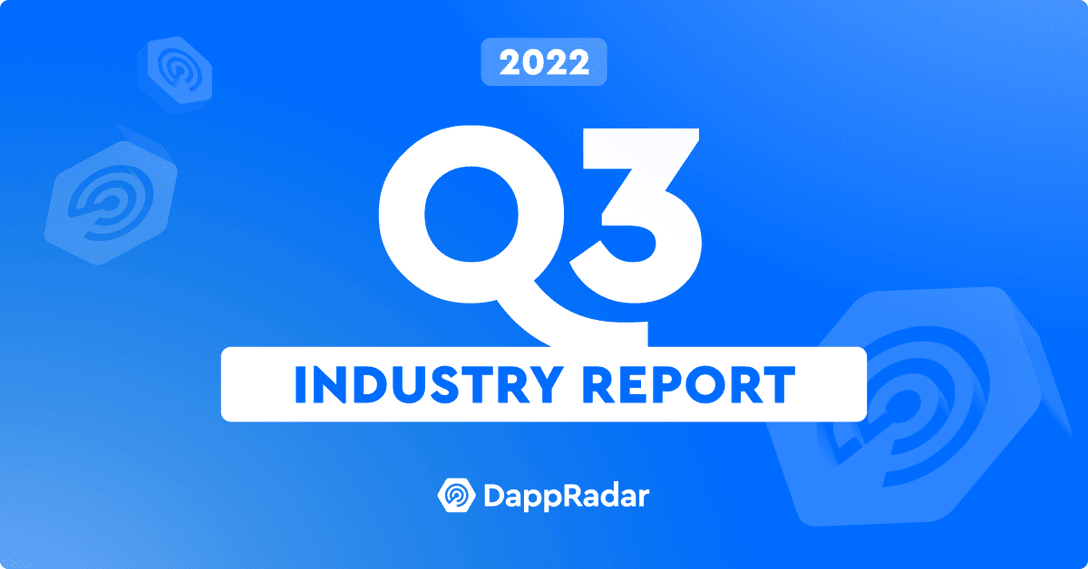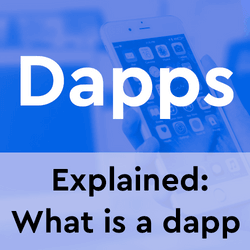
Discover the most important trends in the third quarter of 2022’s blockchain industries.
The start of this year´s third quarter seemed to be promising. Nonetheless, the global macroeconomic environment influenced and adversely impacted the markets. Following a major decline, this quarter may be described as one of consolidation. Thus, it is worthwhile to evaluate the many significant events and transformations that have occurred over this period.
Summary
Months after surviving the collapse of Terra, DeFi’s former second largest ecosystem, and amid a dampening macroeconomic environment, the dapp industry appears to have found consolidation levels. The two major cryptocurrencies, Bitcoin (BTC) and Ethereum (ETH), remained within the same price range from the close of June. However, in Q3, the correlation between BTC and the S&P 500 increased, showing that investors still consider cryptos in the same category as risky stocks.
Q3 of 2022 also marked the quarter of an important technological upgrade to the Ethereum protocol known as ‘The Merge’. The critical milestone took six years to develop and represent Ethereum’s much expected switch from Proof-of-Work to Proof-of-Stake. As a result, Layer-2 pre-merge activity spiked notably, although it cooled down after the event.
From the blockchain perspective, on average, a total of 1.8 million daily Unique Active Wallets (UAW) were connected to a blockchain dapp during Q3. This represents a 12% increase from Q2, showing once again the industry’s resilience.
The NFT market shrunk 67% from the previous quarter with only $2.75 billion generated by NFT trades. OpenSea’s dominance is also falling down as marketplace peers Magic Eden and X2Y2 gain ground in this market. While the NFT financial metrics may signal a debacle, additional on-chain data such as the sales count and the number of traders tell another story.
Aside from market performance, the third quarter of 2022 was a significant quarter in terms of adoption and technology. In July, Polygon and Nothing company announced a partnership to build a web3-native smartphone, while Disney, Ticketmaster, MasterCard, and Starbucks became the latest leading brands to announce the integration of NFTs as part of their Web3 strategy. Even the Japanese government announced a few days ago the utilization of NFTs in rewarding local authorities for exemplary service.
From a regulatory standpoint, governments worldwide are taking cryptocurrency seriously. On the final day of June, the European Union struck an agreement on how to govern the crypto-asset market, approving Markets in Crypto-Assets (MiCA), the EU’s primary legislative plan to manage the industry in its 27 member states.
The White House published the “First-Ever Comprehensive Framework for Responsible Development of Digital Assets” on September 16, presenting the findings and suggestions of multiple government departments following six months of research into the cryptocurrency business. Involvement and debate of crypto by regulators is symptomatic of the popular assumption that crypto is here to stay and, thus, should be regulated to “keep people secure.”
In the following report, we will attempt to outline some of the most significant trends and figures that characterized the third quarter of 2022’s blockchain industries.
- SEO Powered Content & PR Distribution. Get Amplified Today.
- Platoblockchain. Web3 Metaverse Intelligence. Knowledge Amplified. Access Here.
- Source: https://dappradar.com/blog/dappradar-q3-industry-report-on-chain-indicators-signal-a-recovering-crypto-market
- 1
- 2022
- a
- active
- activity
- Additional
- Adoption
- adversely
- After
- Agreement
- Although
- Amid
- and
- Announce
- announced
- Another
- assumption
- Authorities
- average
- between
- Billion
- Bitcoin
- blockchain
- brands
- BTC
- build
- business
- Category
- characterized
- Close
- Collapse
- company
- comprehensive
- connected
- Consider
- consolidation
- Correlation
- critical
- crypto
- Crypto Market
- crypto-assets
- cryptocurrencies
- cryptocurrency
- cryptos
- daily
- dapp
- DappRadar
- data
- day
- Days
- debate
- Decline
- departments
- described
- develop
- Development
- digital
- Disney
- Dominance
- down
- during
- ecosystem
- eden
- Environment
- ETH
- ethereum
- ethereum (ETH)
- Ethereum's
- European
- european union
- evaluate
- Even
- Event
- events
- expected
- Falling
- few
- Figures
- final
- financial
- following
- Former
- found
- Framework
- from
- Gain
- generated
- Global
- Government
- Governments
- Ground
- here
- House
- How
- How To
- However
- HTTPS
- impacted
- important
- in
- Increase
- increased
- Indicators
- industries
- industry
- industry’s
- influenced
- integration
- Investors
- involvement
- IT
- July
- known
- largest
- latest
- leading
- Legislative
- levels
- local
- Macroeconomic
- magic
- magic eden
- major
- manage
- many
- marked
- Market
- marketplace
- Markets
- mastercard
- member
- Metrics
- MiCA
- milestone
- million
- months
- most
- multiple
- NFT
- nft market
- NFTs
- notably
- number
- occurred
- On-Chain
- on-chain data
- ONE
- outline
- part
- Partnership
- People
- performance
- period
- perspective
- plan
- plato
- Plato Data Intelligence
- PlatoData
- Polygon
- Popular
- previous
- price
- primary
- promising
- Proof-of-Stake
- Proof-of-Work
- protocol
- published
- Q2
- Q3
- Quarter
- range
- recovering
- regulated
- Regulators
- regulatory
- remained
- report
- represent
- represents
- research
- resilience
- responsible
- result
- rewarding
- Risky
- S&P
- S&P 500
- sales
- same
- Second
- secure
- seemed
- September
- service
- should
- Signal
- significant
- SIX
- Six months
- smartphone
- some
- starbucks
- start
- States
- stay
- Still
- Stocks
- Story
- Strategy
- such
- Switch
- taking
- technological
- Technology
- terms
- Terra
- The
- their
- Third
- Ticketmaster
- to
- Total
- Traders
- trades
- transformations
- Trends
- union
- unique
- upgrade
- Wallets
- Web3
- while
- white
- White House
- will
- within
- worldwide
- worthwhile
- x2y2
- years
- zephyrnet









